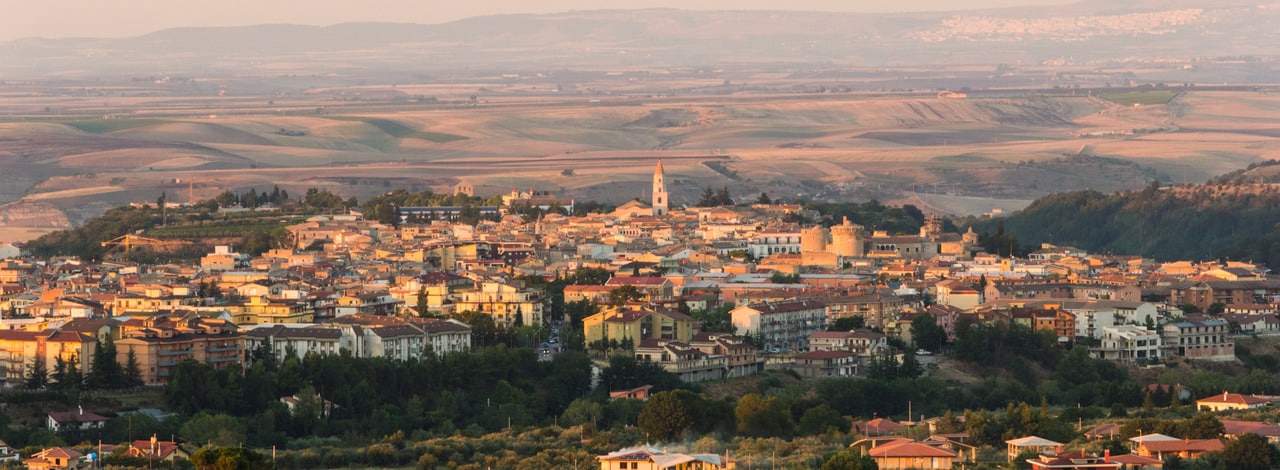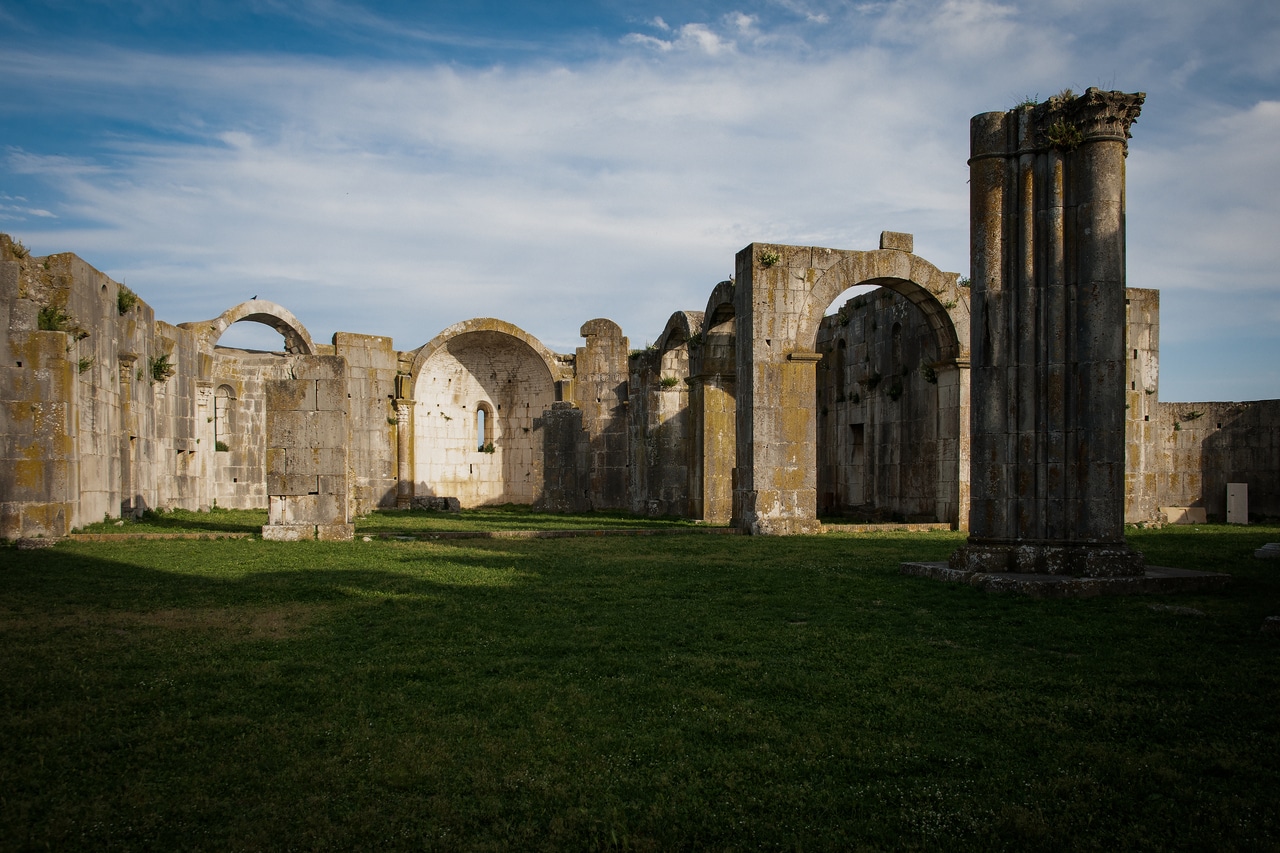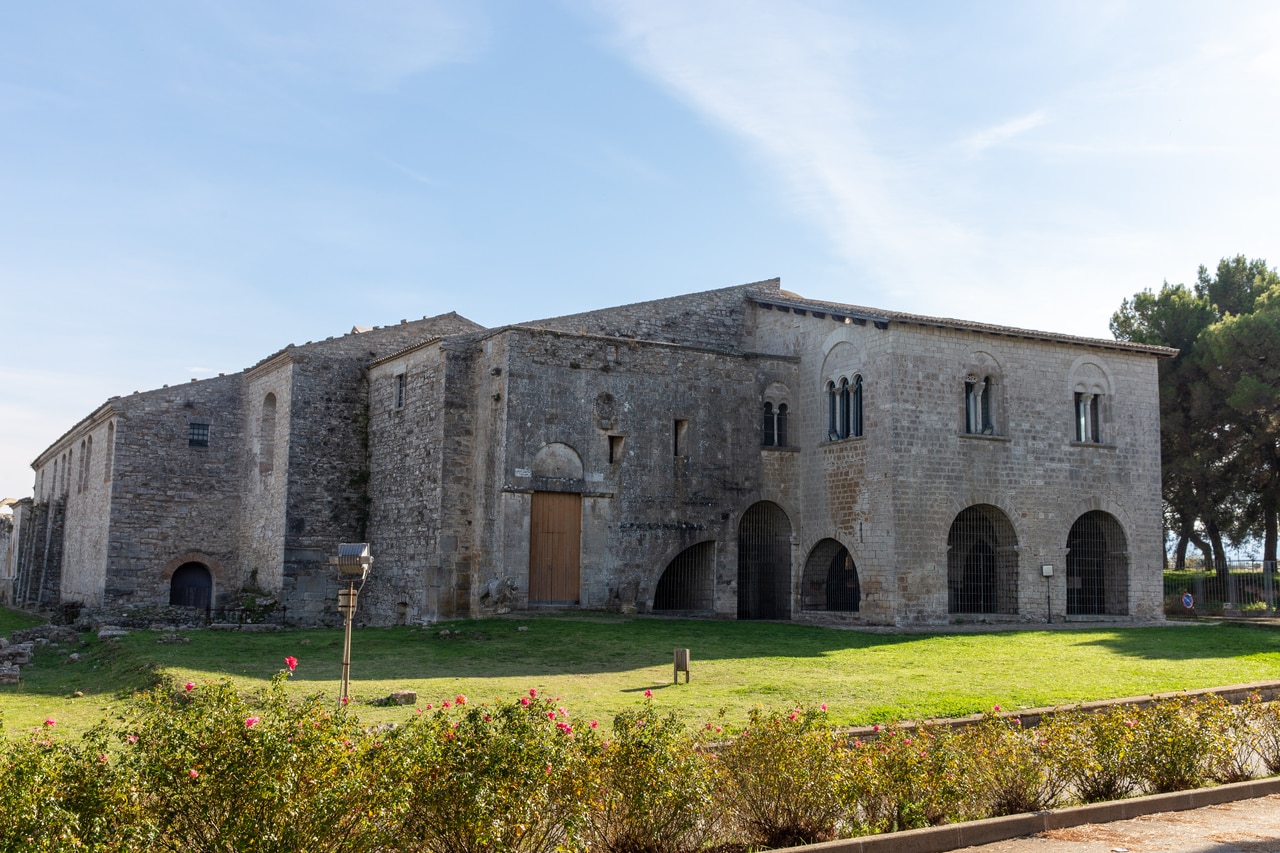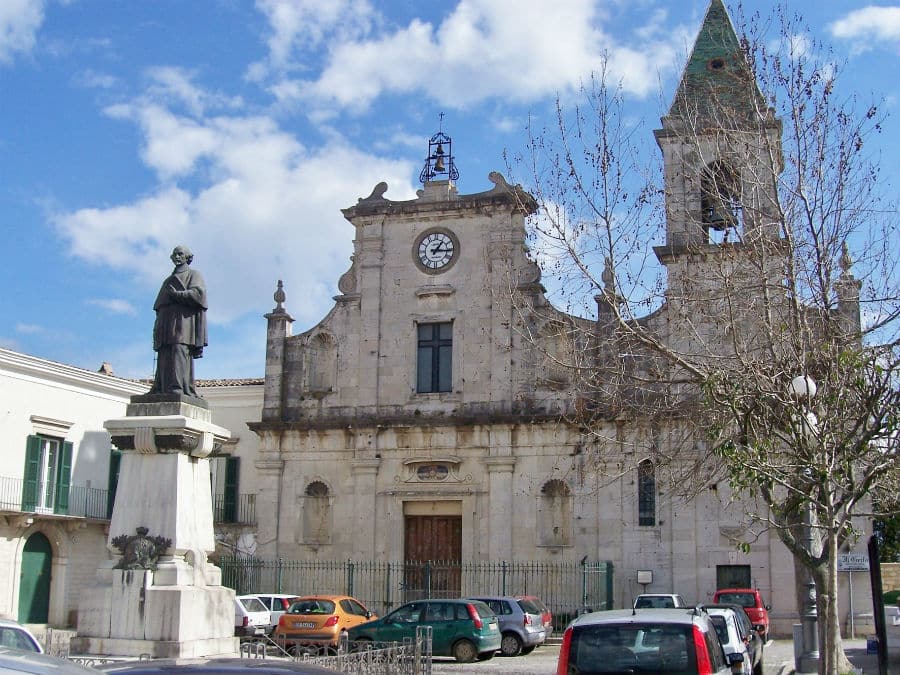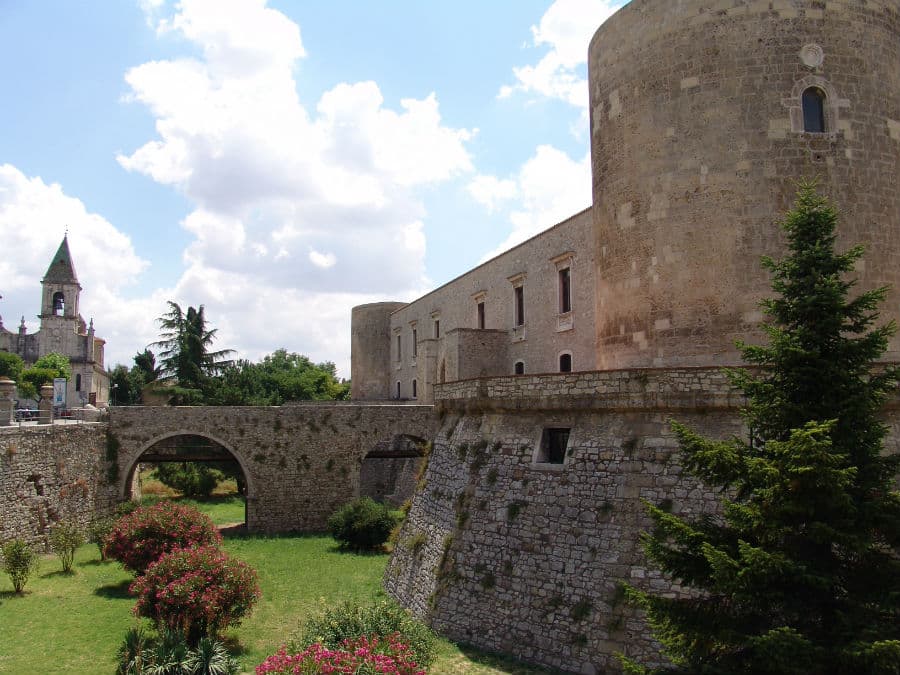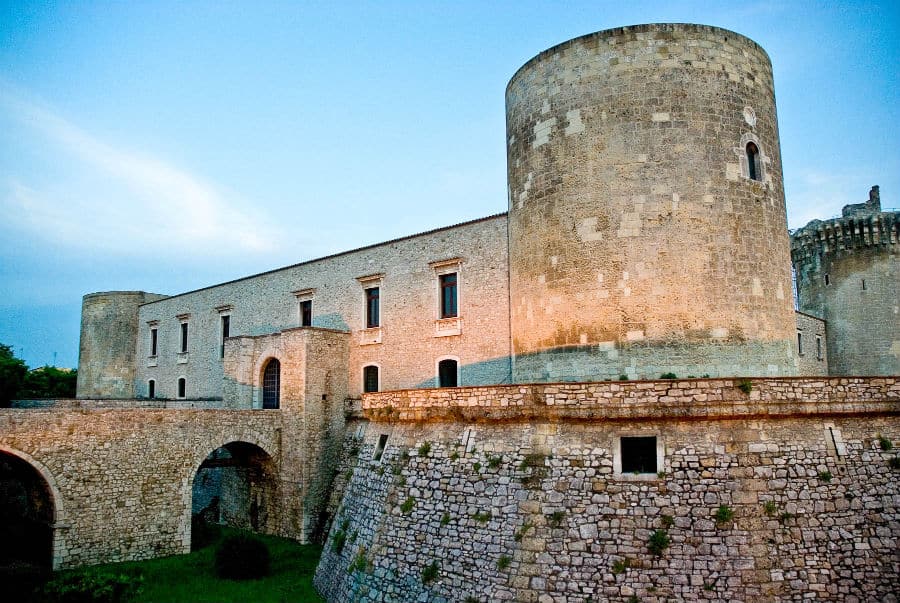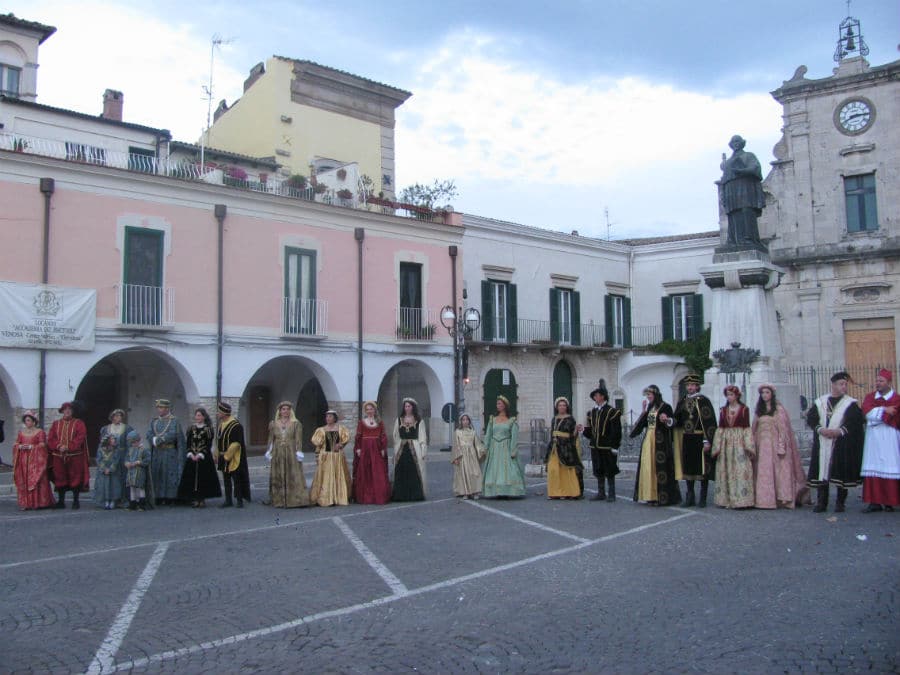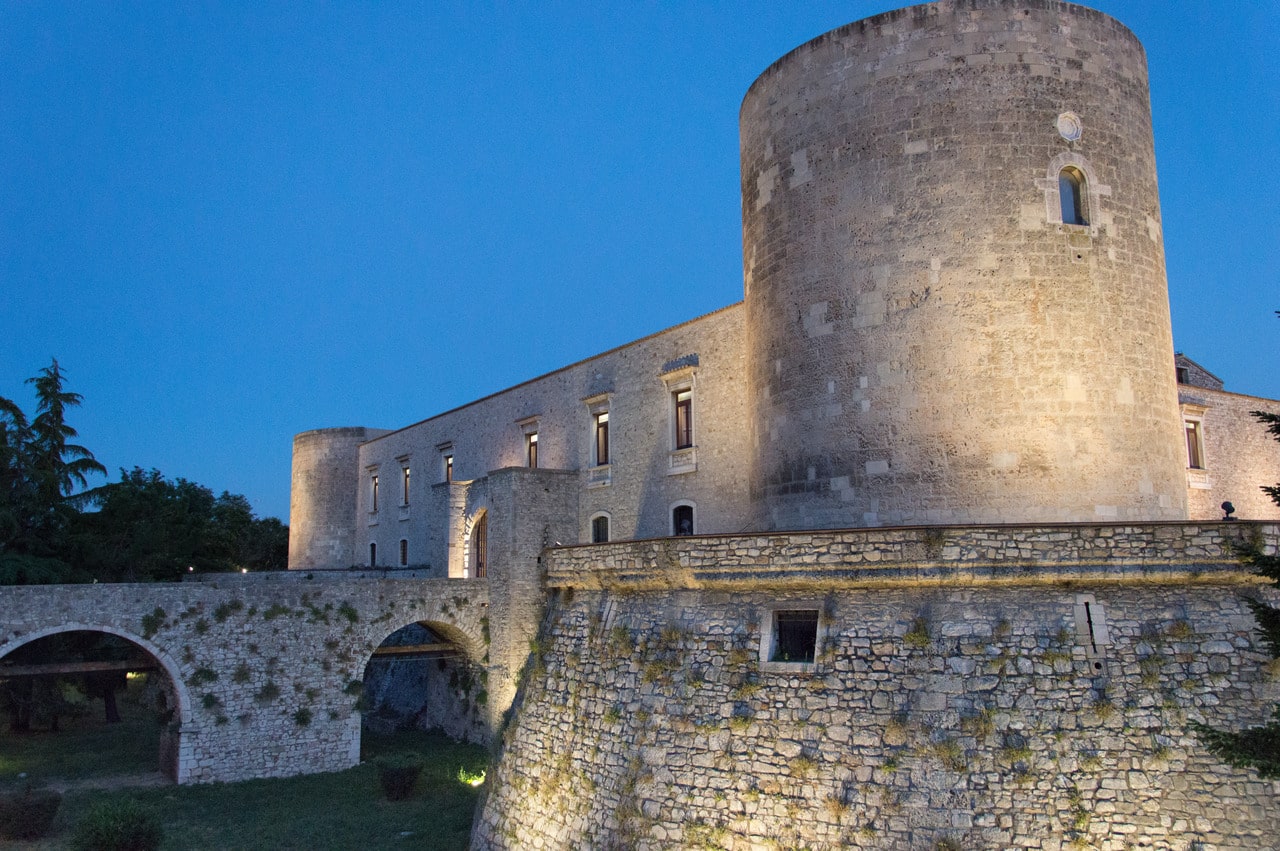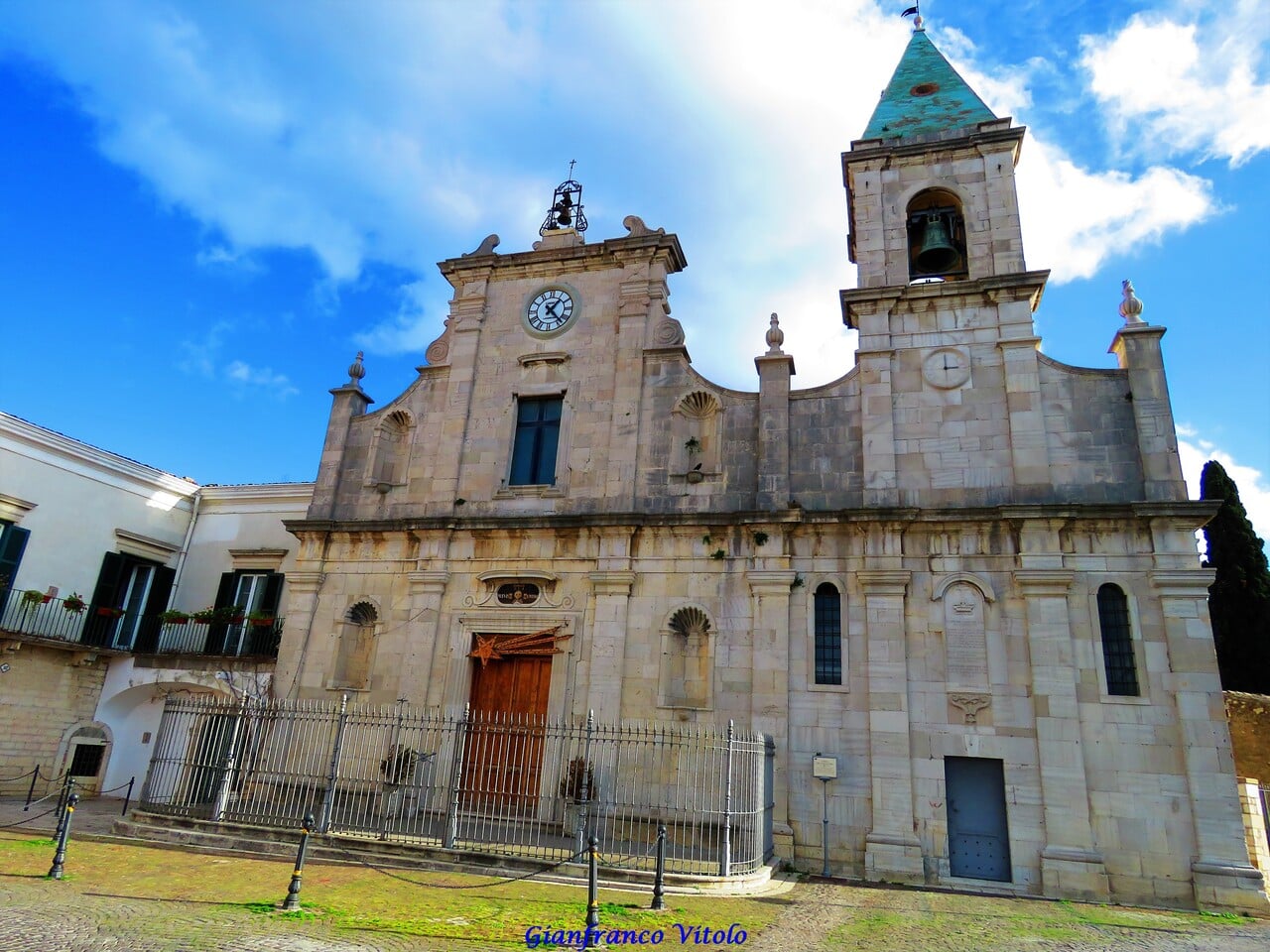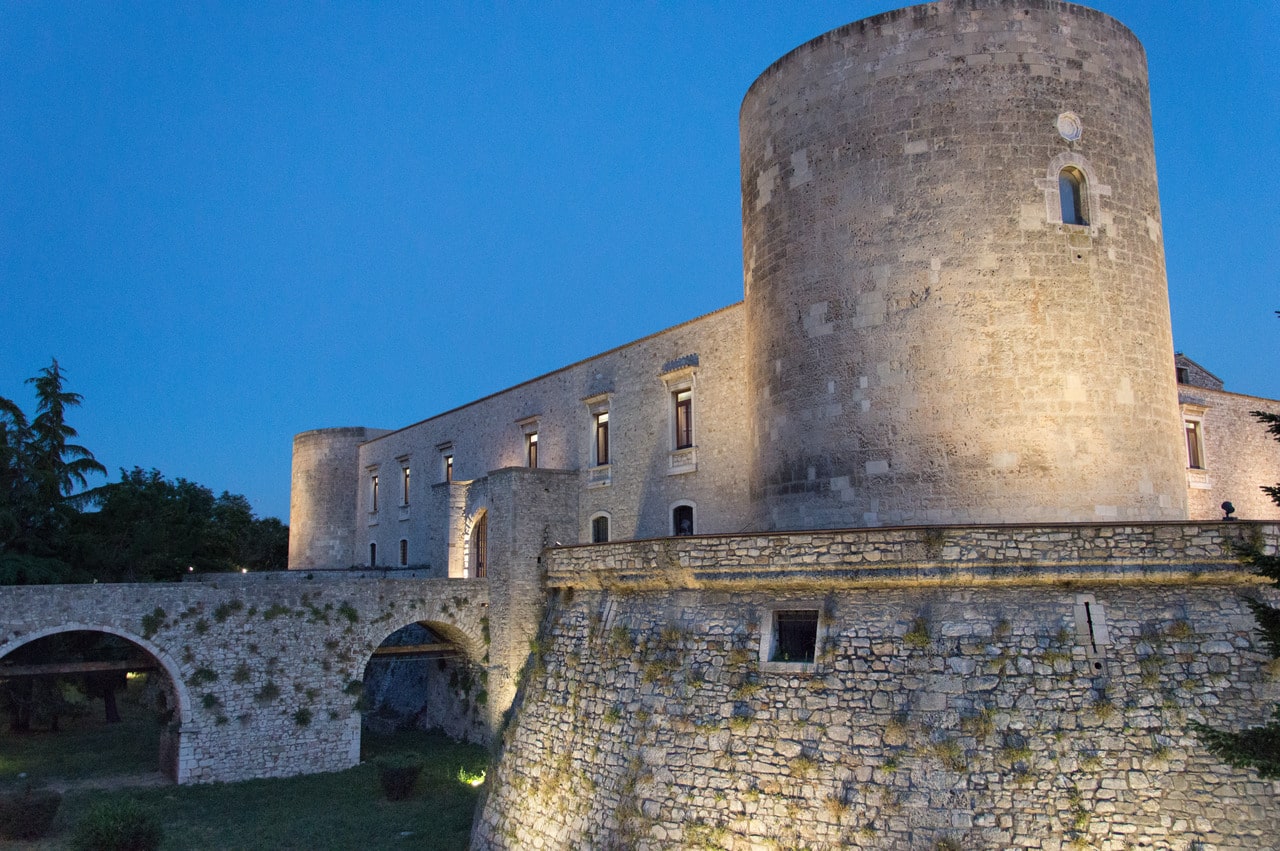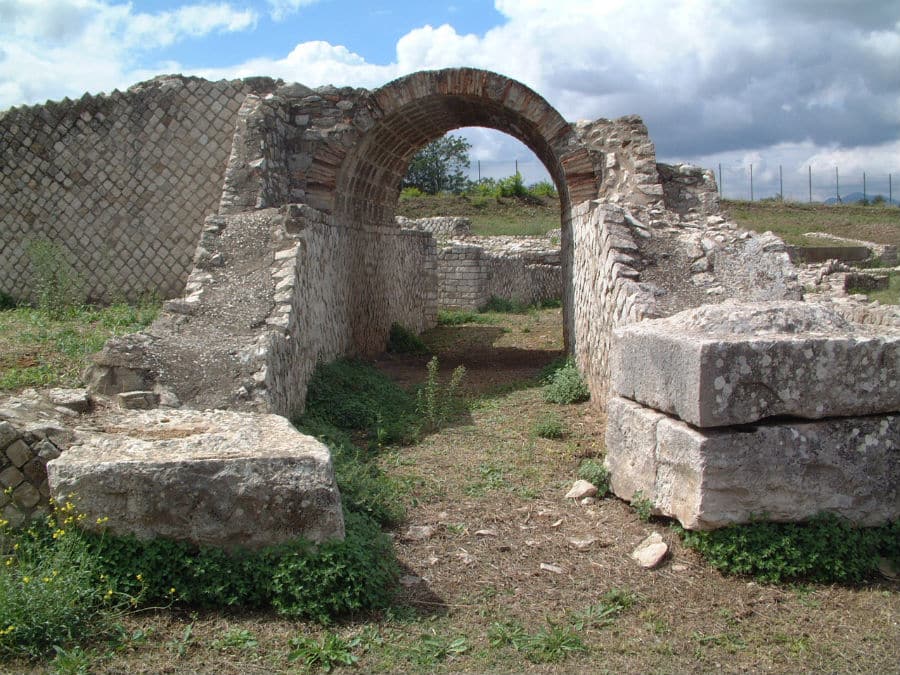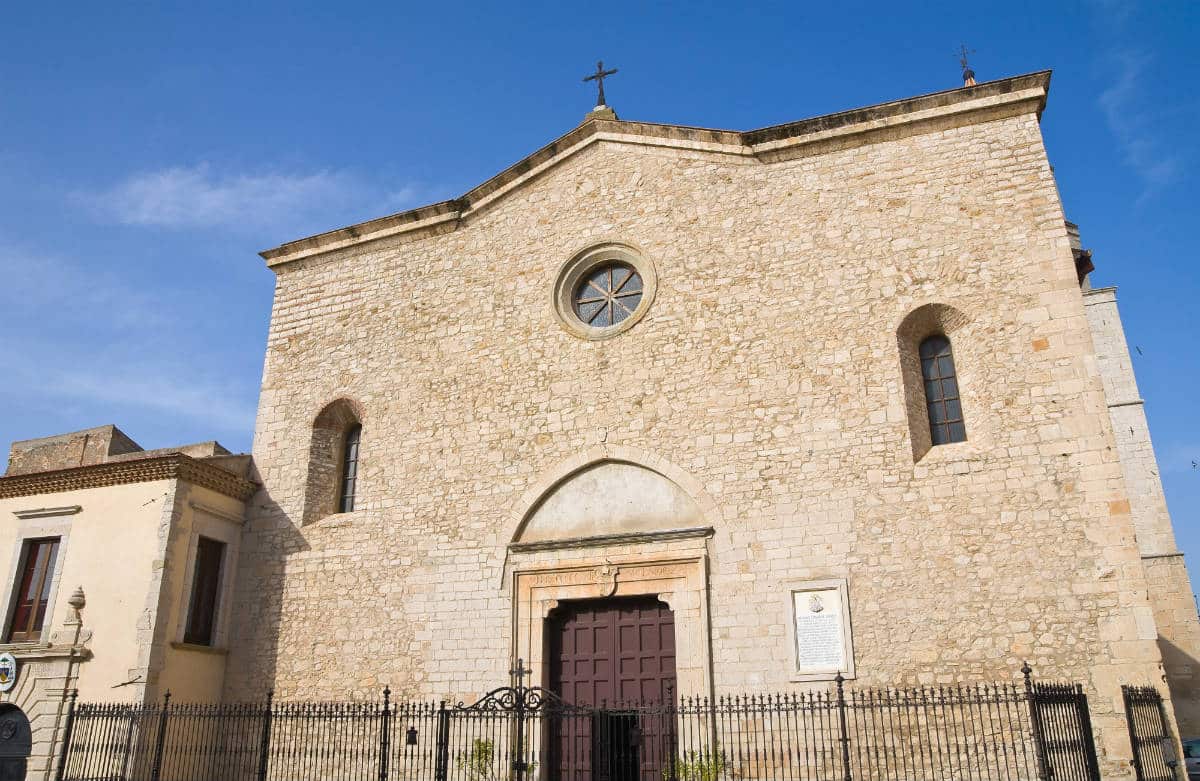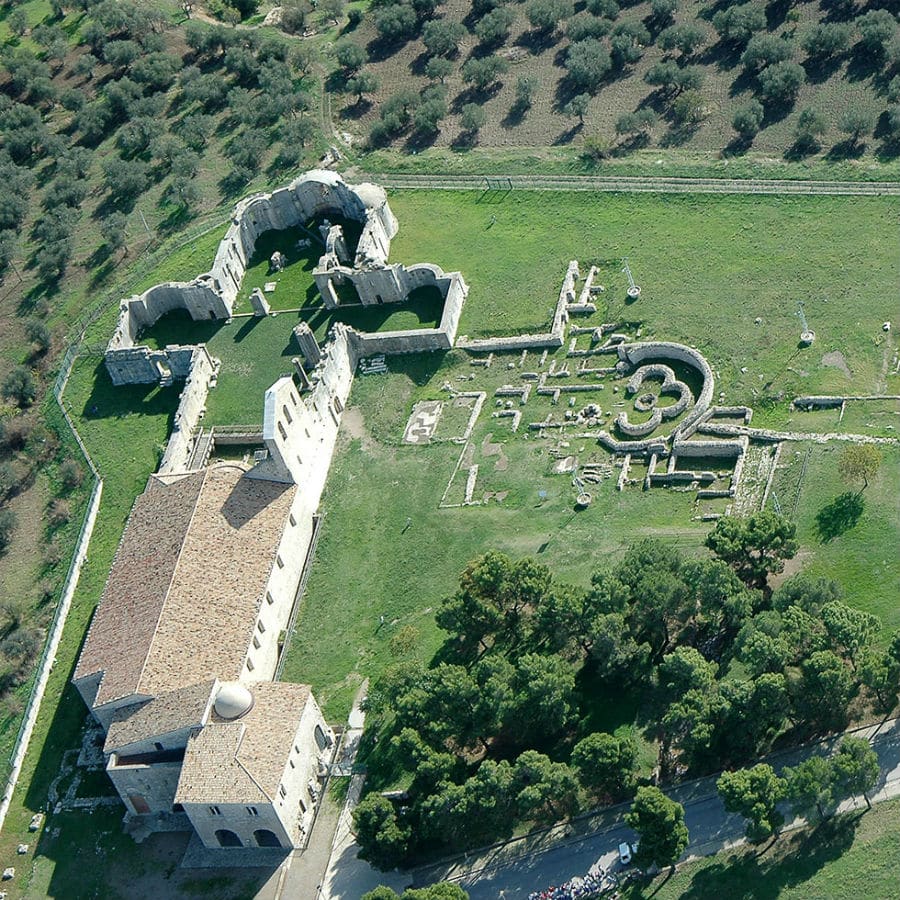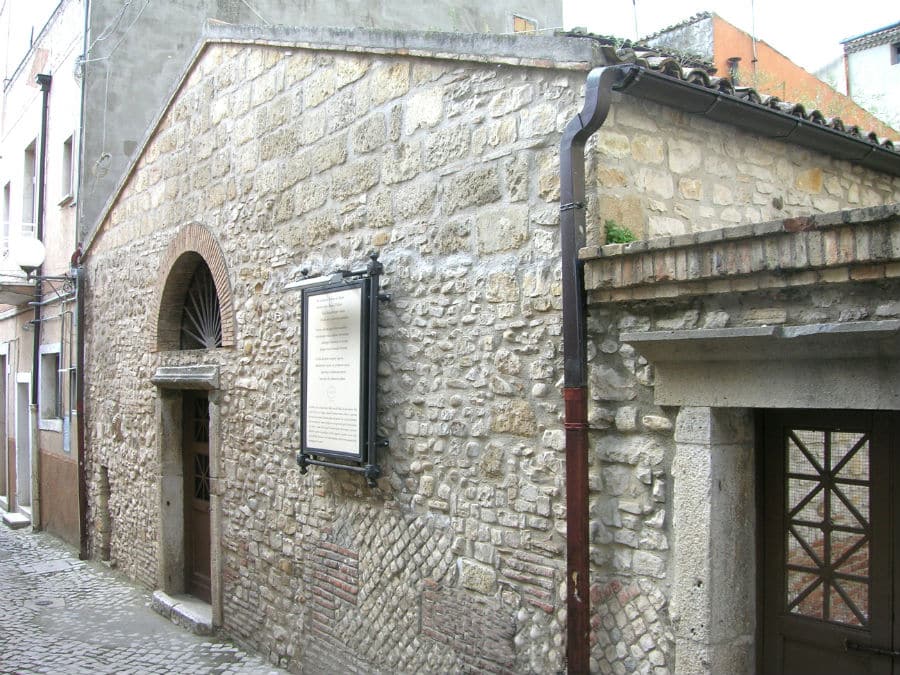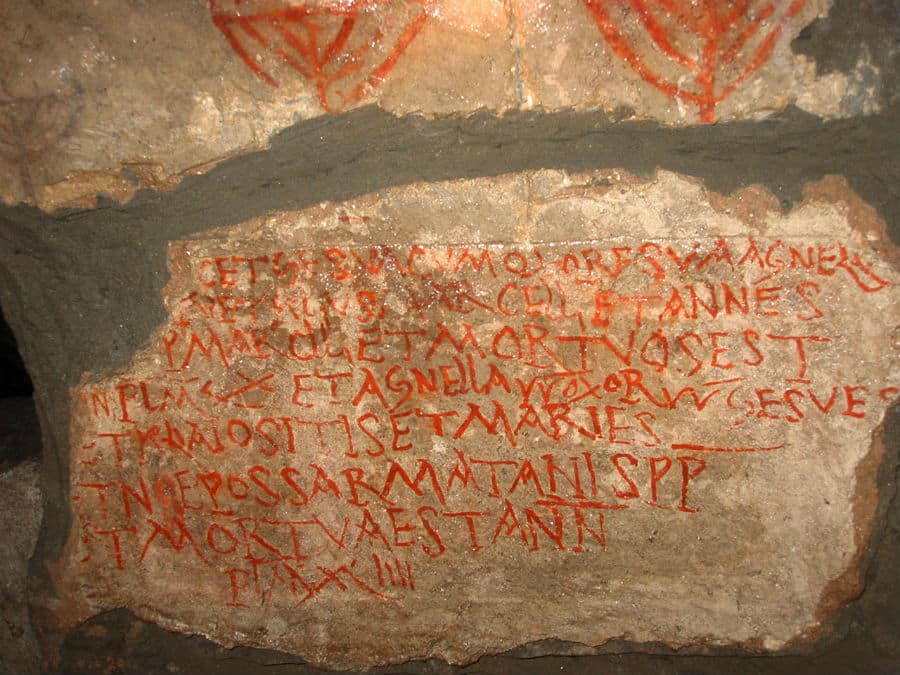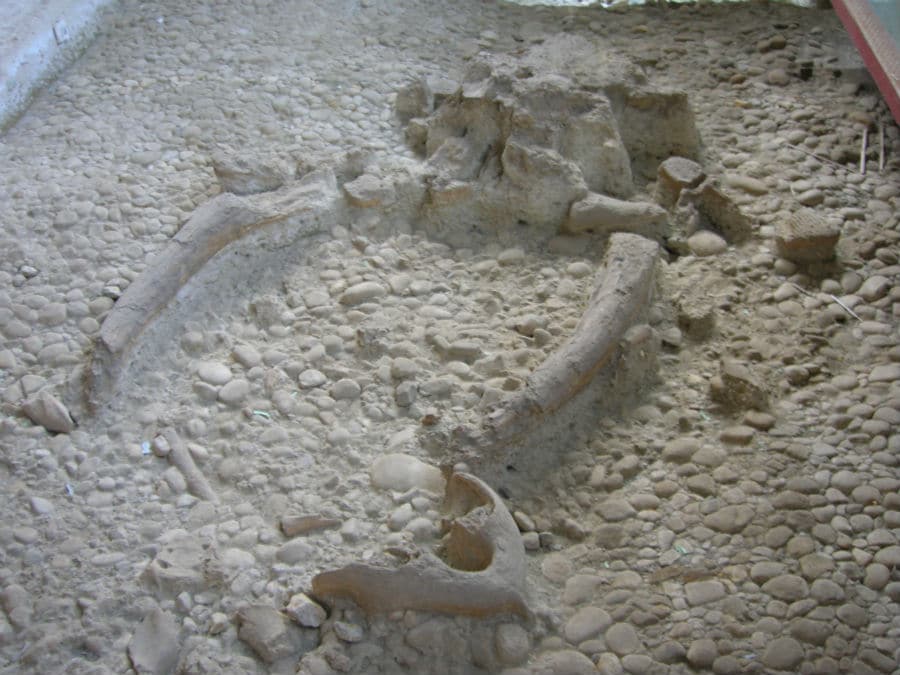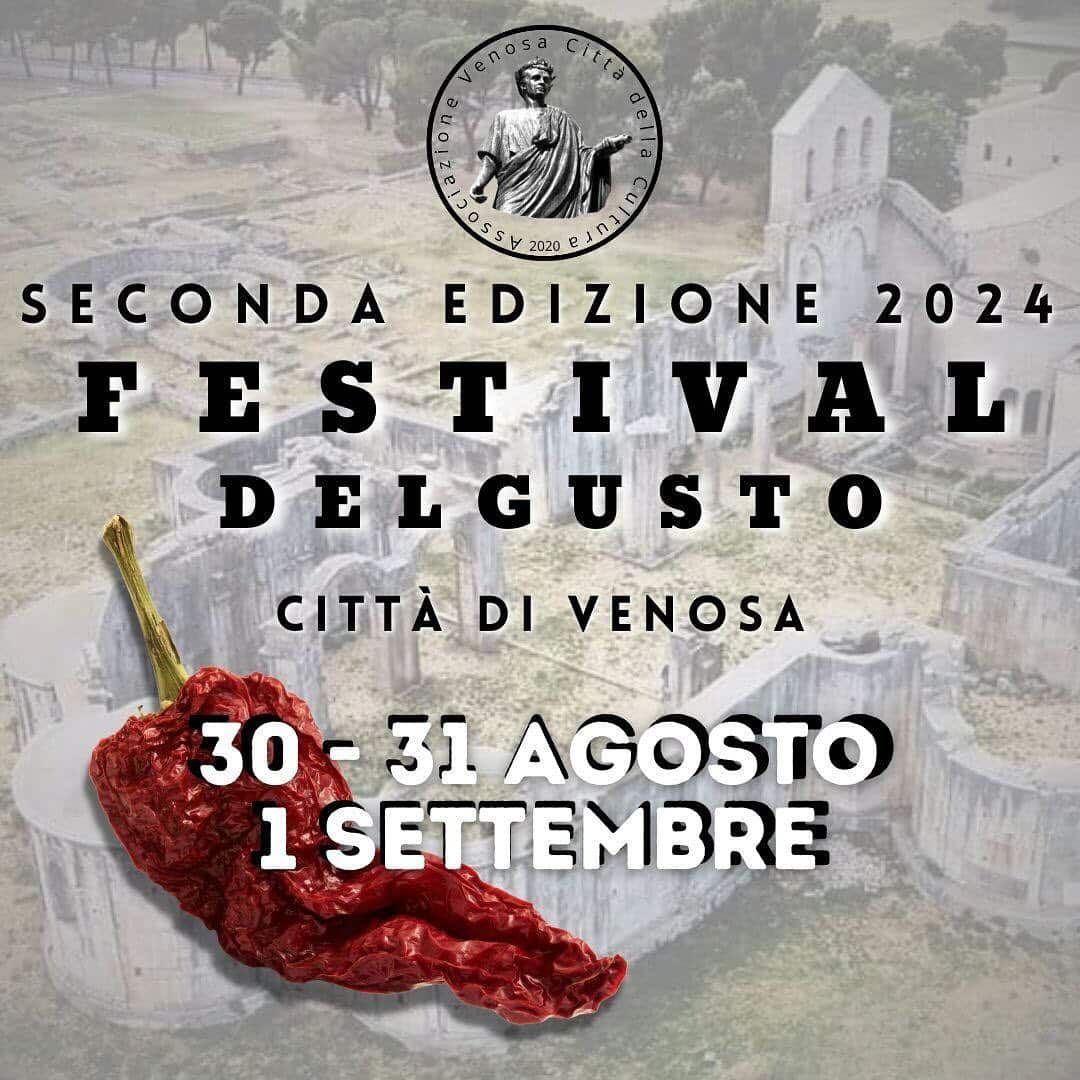Home of the Latin poet Quintus Horatius Flaccus, Venosa is located in the Vulture-Melfese region of Basilicata.
The origin of the name is to be found in the reason for its founding, which took place in honor of the goddess Venus. Traces found together with remains of a Neolithic necropolis, found in the Toppo d'Aguzzo locality in Rapolla in the vicinity of the Venosa territory, certify human presence in the Venosa territory since prehistoric times. Much of this evidence can be found at the "Paleolithic Park" in Notarchirico.
Rich artistic jewels and fine architecture can be admired from the moment one enters the town, between the Trinity Church and the adjoining Unfinished, sacred places strongly linked to the origin of the Norman dynasty, the nearby Archaeological Park, until you reach the heart of its historic center where the majestic Pirro del Balzo Castle (home of the National Archaeological Museum) dominates, and then discover, just outside the town the Jewish catacombs near the Christian ones, evidence of the presence of a substantial Jewish community between the 4th and 9th centuries.
Not to be missed, then, are the cathedral of St. Andrew the Apostle, the Paleolithic prehistoric site of Notarchirico, among the oldest in Europe, the so-called House of Horace, several historic palaces and fountains, such as the Angevin one, or of the Pilieri, right in front of the castle, erected in 1298.
Venosa is the scene of events of varied inspiration, cultural, religious and gastronomic, at all times of the year, such as on the occasion of "Aglianica," which for almost two decades in the Vulture-Melfese area has celebrated Aglianico Doc.
History
The town, probably founded by Latin peoples, was wrested from the Samnites by the Romans in 291 B.C. by Consul Lucius Postumius Megellus, who made it a Latin colony, where some 20,000 individuals moved in.
During the Second Punic War, in 208, the consul Marcus Claudius Marcellus died there, attacked by Hannibal during a reconnaissance. In 190 B.C. the foundation of the Appian Way is an occasion for strong development of the center, and in 89 B.C. it received the title of Municipium (Roman city), obtaining the right to vote and citizenship for its inhabitants.
In 65 B.C., Quintus Horatius Flaccus, one of the most distinguished poets of ancient times who later emigrated to Rome, was born and spent his adolescence in the municipium. In 43 B.C. it was subject to a new dedication by the triumvirs, who expropriated its ager publicus land, redistributing it among veterans.
With the imperial age, in the early periods of the advent of Christianity (around 70 AD), one of the first Jewish communities in Italy settled in Venosa, which managed to integrate with the local population. A testimony to this coexistence is the Magdalene Hill, where both Semitic and Christian burials are located in its hollows.
In 114 AD the Via Traiana was opened, which connected Benevento and Brindisi but did not touch Venosa, bringing disadvantageous economic consequences for the city. With the fall of the Roman Empire and the consequent advent of the medieval era, Venosa was subject to repeated occupation by barbarian populations from the 5th century.
In 476 the Heruli of Odoacer invaded the town, while the Ostrogoths, in 493, transformed it into an administrative, political and economic center, a title later bestowed on Acerenza. Between 570 and 590, the Lombards elected it the seat of a gastaldate; in 842 the town was sacked by the Saracens, who, in turn, were driven out by Ludwig II, emperor of the Holy Roman Empire.
This was followed by the Byzantines, who were defeated, during the Battle of the Olivento River, by Arduinus' Normans in 1041. During Norman rule, Venosa was assigned to Drogone of Altavilla. Also noteworthy is the presence of Greeks around 980 AD, evidenced by the monastery of "San Nicola di Morbano."
In 1133, Venosa was sacked and set on fire by Roger II of Sicily. With the coming of the Swabians, Frederick II had a castle built, erected on a site where there was an 11th-century Lombard fort. In 1232, the future Swabian emperor Manfred, son of Frederick II and Bianca Lancia, was born in Venosa.
After a continuous succession of feudal lords, the city was granted as a fief to the Orsini in 1453. After the Angevins, the Aragonese of the Gesualdo family settled, who became feudal lords and princes of Venosa in 1561, making the city an important center of cultural, intellectual and artistic activity.
It was during this period that Prince Carlo Gesualdo, one of the most prestigious musicians of his time but also one of the most controversial, lived; the composer is said to have taken refuge in his feud of Gesualdo after having murdered, in Naples, his bride (as well as cousin) Maria d'Avalos, guilty of having betrayed him with the duke of Andria, Fabrizio Carafa. In 1808, Venosa became the third city with the most possessions in Basilicata, after Melfi and Matera, as well as having active and passive rights in the Napoleonic National Parliament.
In 1820, it played a small role in the peasant uprisings and the Carbonari uprisings. With the unification of Italy, in 1861 it was conquered by the brigands of the Rionerese Carmine Crocco, who, after defeating the garrison of the Venosian National Guard, were welcomed and supported by the local population. During the occupation Francesco Saverio Nitti, grandfather of the eponymous southerner, was killed.


